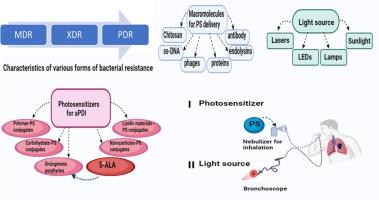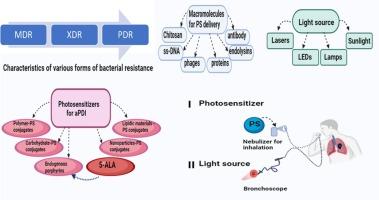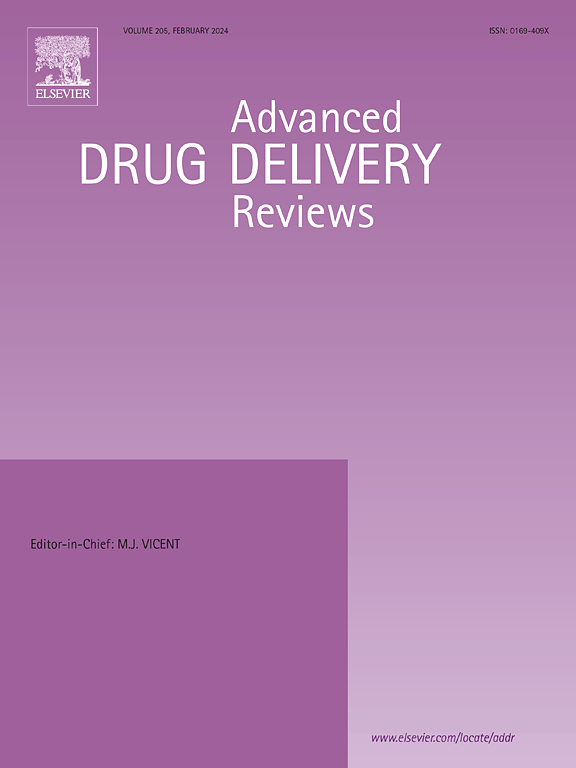A systematic overview of strategies for photosensitizer and light delivery in antibacterial photodynamic therapy for lung infections
IF 15.2
1区 医学
Q1 PHARMACOLOGY & PHARMACY
引用次数: 0
Abstract
Antimicrobial photodynamic therapy (aPDT) emerges as a viable treatment strategy for infections resistant to conventional antibiotics. A complex interplay of factors, including intracellular photosensitizer (PS) accumulation, photochemical reaction type, and oxygen levels, determines the efficacy of aPDT. Recent progress includes the development of modified PSs with enhanced lipophilicity and target-specific strategies to improve bacterial cell wall penetration and targeting. Nanotechnology-based approaches, such as using nanomaterials for targeted PS delivery, have shown promise in enhancing aPDT efficacy. Advancements in light delivery methods for aPDT, such as transillumination of large lesions and local light delivery using fiber optic techniques, are also being explored to optimize treatment efficacy in clinical settings. The limited number of animal models and clinical trials specifically designed to assess the efficacy of aPDT for lung infections highlights the need for further research in this critical area. The potential prospects of aPDT for lung tissue infections originating from antibiotic-resistant bacterial infections are also discussed in this review.


肺部感染抗菌光动力疗法中光敏剂和光传输策略的系统性概述
抗菌光动力疗法(aPDT)是治疗对传统抗生素产生抗药性的感染的一种可行方法。细胞内光敏剂(PS)积累、光化学反应类型和氧气水平等因素的复杂相互作用决定了光动力疗法的疗效。最近取得的进展包括开发了亲油性更强的改性 PS,以及改善细菌细胞壁穿透性和靶向性的靶向策略。以纳米技术为基础的方法,如使用纳米材料进行 PS 的靶向递送,已显示出提高 aPDT 疗效的前景。为了优化临床治疗效果,目前还在探索无创局部放电疗法的光传递方法,如对大面积病灶进行透射照明和使用光纤技术进行局部光传递。专门用于评估光动力治疗肺部感染疗效的动物模型和临床试验数量有限,这凸显了在这一关键领域开展进一步研究的必要性。本综述还讨论了 aPDT 治疗抗生素耐药细菌感染引起的肺组织感染的潜在前景。
本文章由计算机程序翻译,如有差异,请以英文原文为准。
求助全文
约1分钟内获得全文
求助全文
来源期刊
CiteScore
28.10
自引率
5.00%
发文量
294
审稿时长
15.1 weeks
期刊介绍:
The aim of the Journal is to provide a forum for the critical analysis of advanced drug and gene delivery systems and their applications in human and veterinary medicine. The Journal has a broad scope, covering the key issues for effective drug and gene delivery, from administration to site-specific delivery.
In general, the Journal publishes review articles in a Theme Issue format. Each Theme Issue provides a comprehensive and critical examination of current and emerging research on the design and development of advanced drug and gene delivery systems and their application to experimental and clinical therapeutics. The goal is to illustrate the pivotal role of a multidisciplinary approach to modern drug delivery, encompassing the application of sound biological and physicochemical principles to the engineering of drug delivery systems to meet the therapeutic need at hand. Importantly the Editorial Team of ADDR asks that the authors effectively window the extensive volume of literature, pick the important contributions and explain their importance, produce a forward looking identification of the challenges facing the field and produce a Conclusions section with expert recommendations to address the issues.

 求助内容:
求助内容: 应助结果提醒方式:
应助结果提醒方式:


